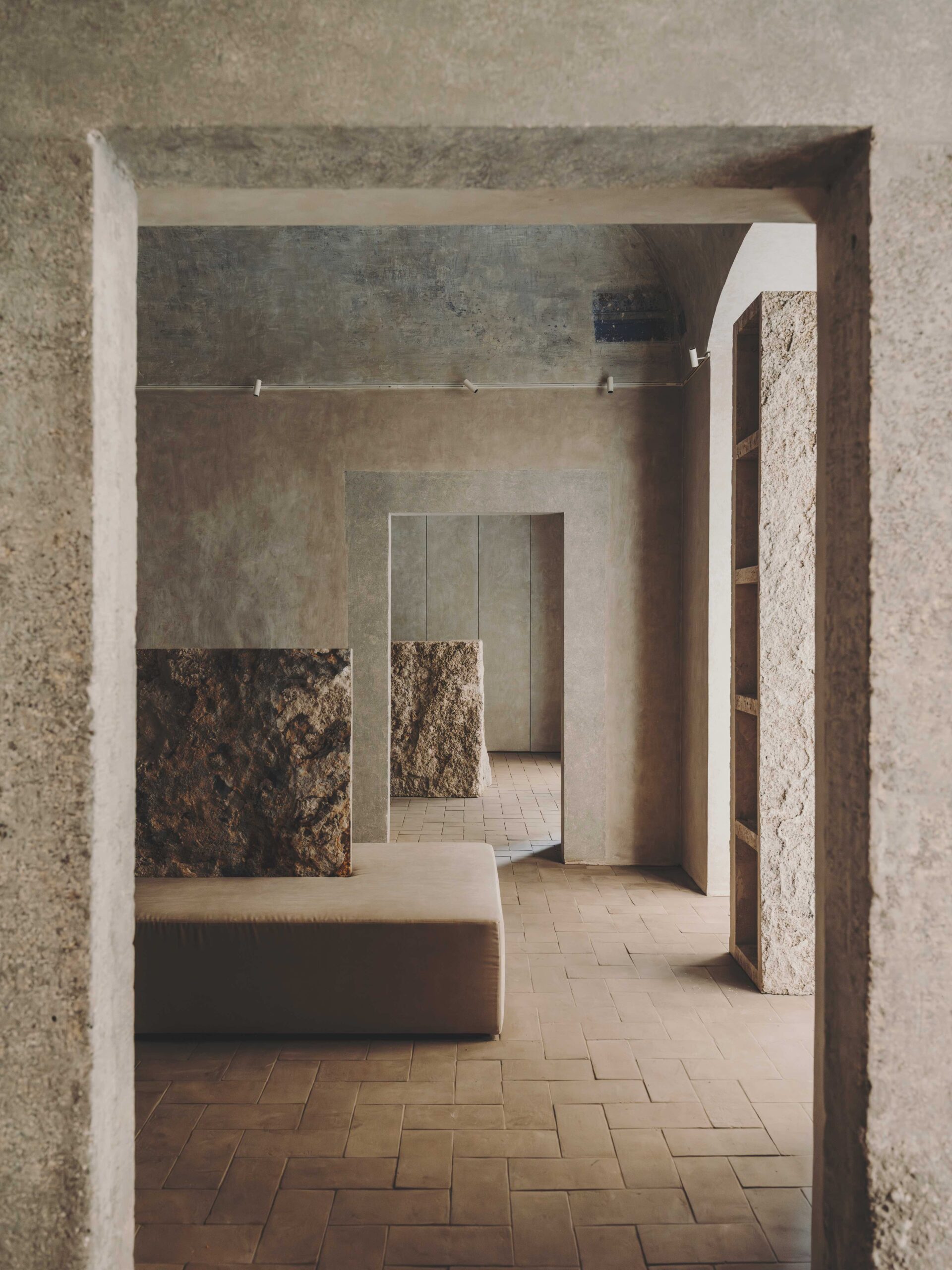
Nomos Hotel
In the Heart of Rome, a Place to Welcome and Inspire
In the heart of Rome, a place to host, capable of making one experience the essence of materiality and the genius loci of the Eternal City, bringing to light the soul of its guests. It is called Nomos Hotel, the latest poem by Henry Timi, who this time is engaged in art direction and the craftsmanship of all interior art in the hospitality field.
There is no need for curtains to shield oneself from Rome’s timeless beauty. On the contrary, the windows in each room become glimpses onto the ancient city, beneath which custom-worked stone desks create a dialogue between the intimacy of the room and the outdoor space, removing any sense of boundary.
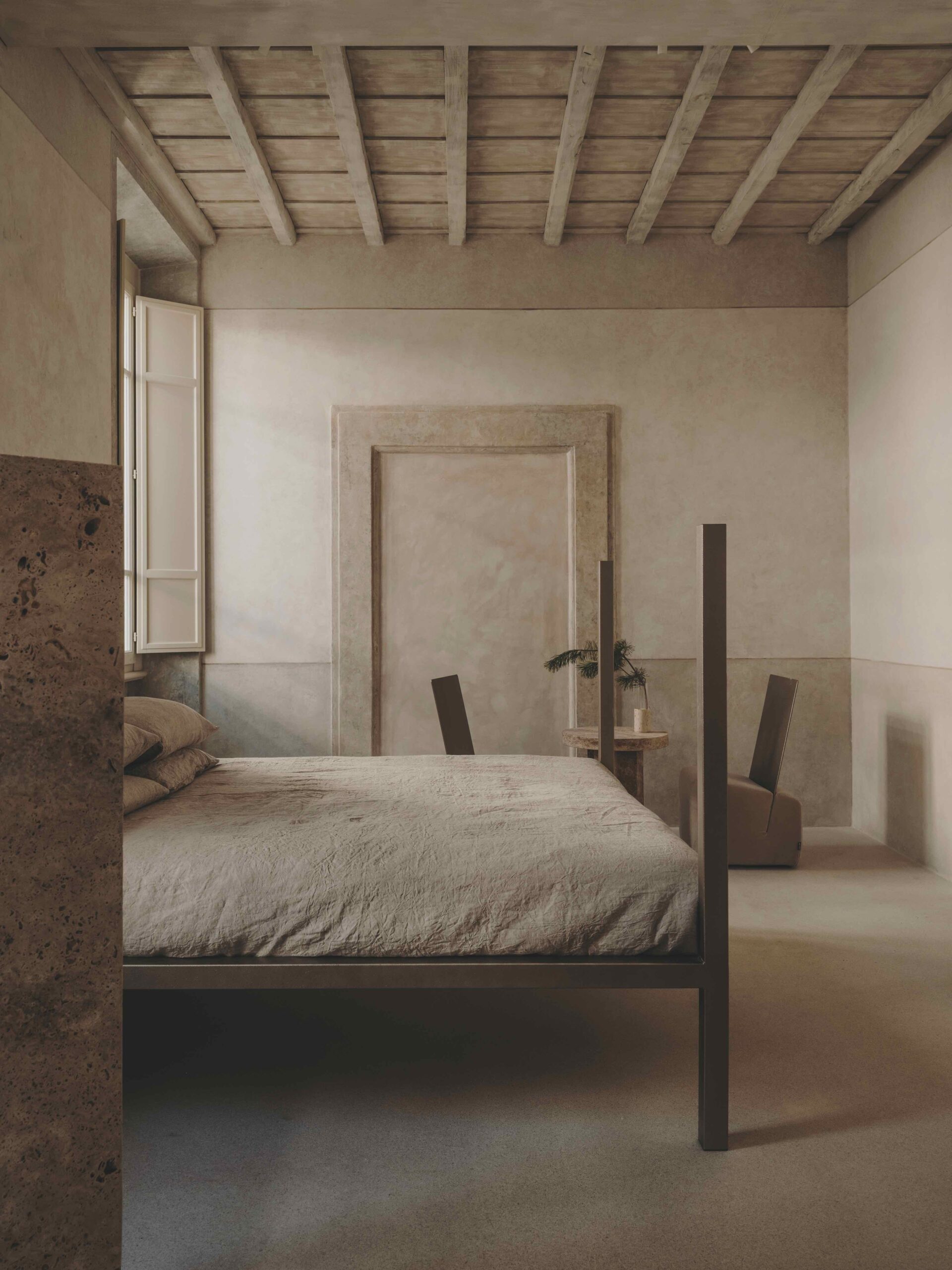

Because this hotel is conceived with matter but created to evoke emotions—those contemplative sensations that arise when fingertips brush against living materials in every carefully crafted detail, and the joyful experience of culinary experiences at a high level in the bar and restaurant areas, the first spaces to welcome guests.

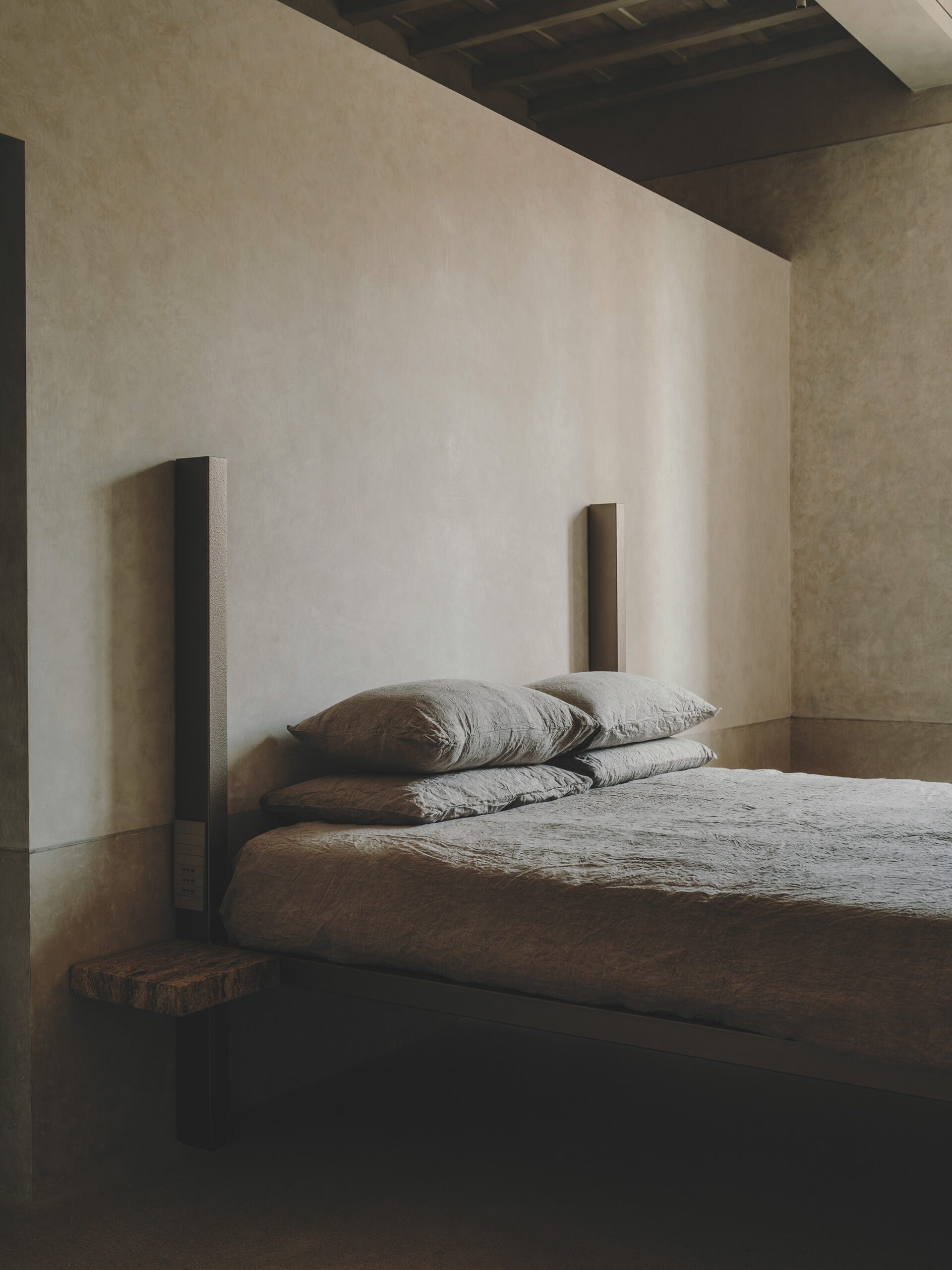

The patina of time, expressed through the raw material of plastered walls, as well as handmade terracotta flooring for public areas or terrazzo flooring created in place for the rooms, creates a strong synergy with the purity of design. A design that conceals disturbing elements, highlighting the essence of a completely new hospitality experience—a sculptural space in which to rediscover oneself.

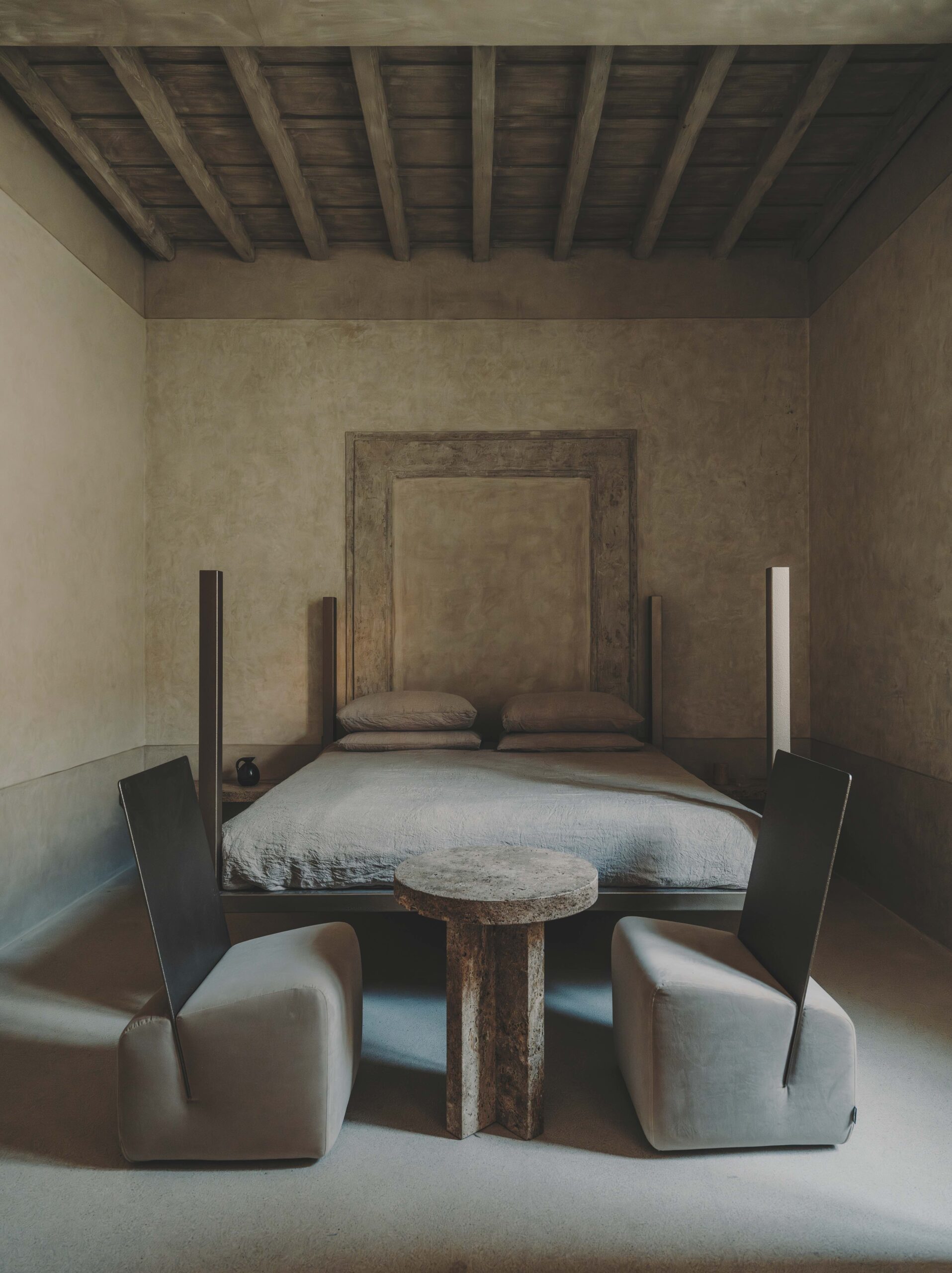
Like pilgrims on a journey, guests of Nomos Hotel rediscover their own dimension as “space occupants”, their relationship with origins, and their ability to observe—even through touch—the essence of things. Guests are no longer merely temporary visitors in a space dictated by design trends, but become the true hosts of an environment so pure and essential that it makes more room for memories and the experiences of travel.
This is an entirely new vision of hospitality, made innovative by an absolute project, conceived in its entirety through the masterful use of raw materials, integrated into every detail: door handles, raw natural linen-upholstered mattresses, wardrobe hangers—even the candles—are all Henry Timi designs.
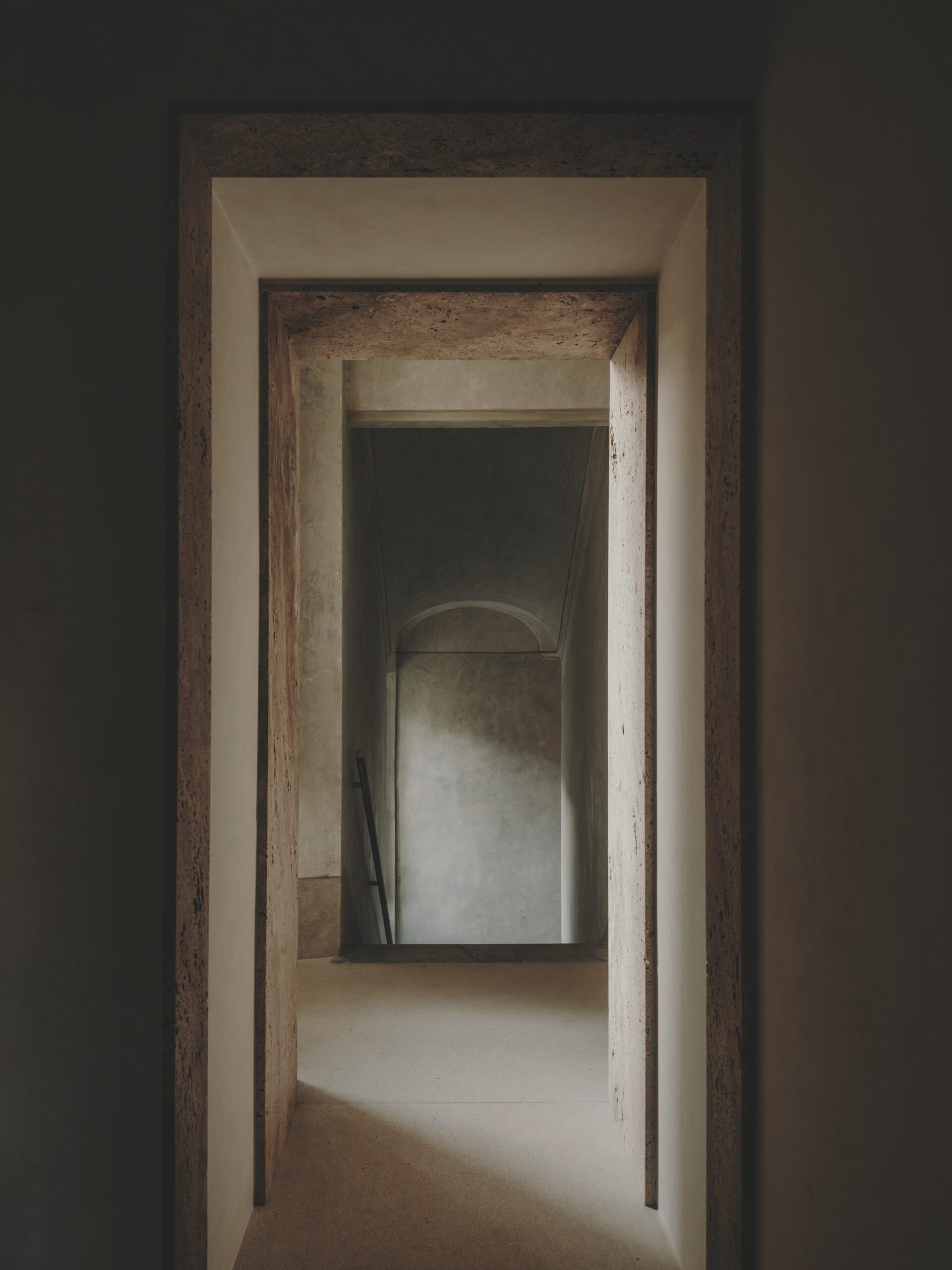
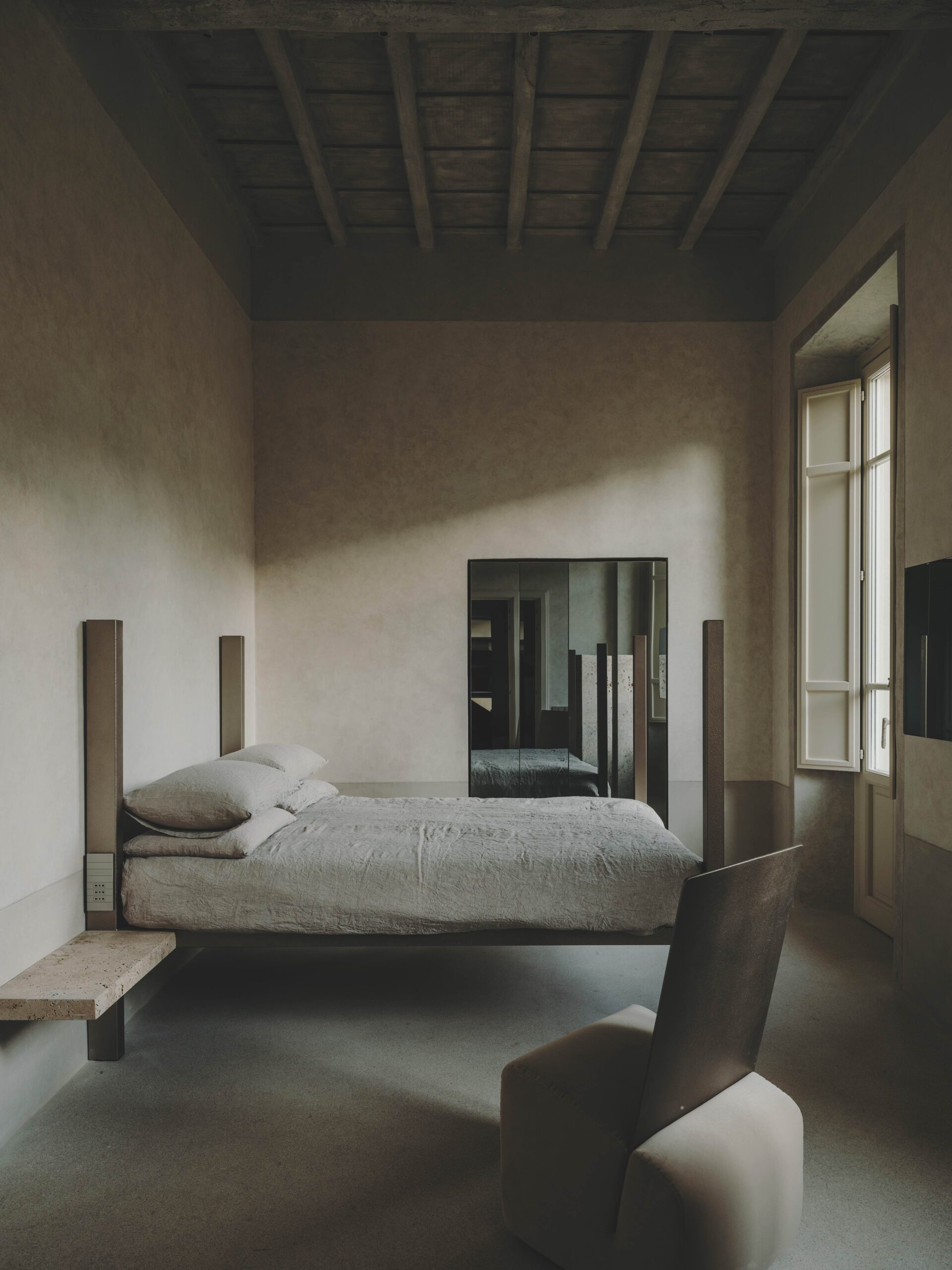
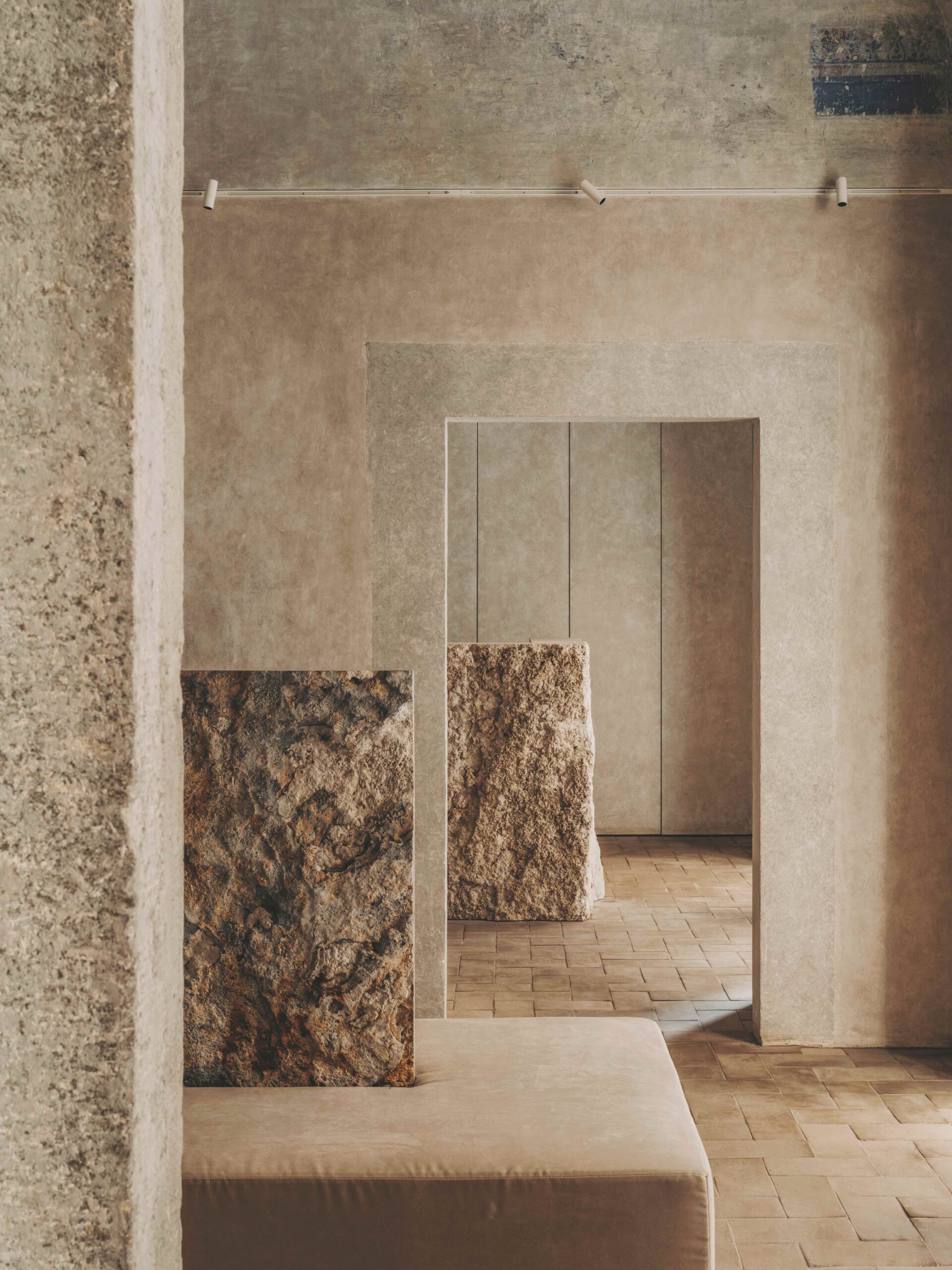
Two publicly accessible levels: The 18th-century monastic building, restored with artistry and mastery, features on the ground floor the reception and BAR ANTE, an important place of conviviality for a high-level dining experience, while the lower ground floor, with the RELAX ROOMS, is dedicated to well-being, featuring spa areas, a gym, and an exquisite wine cellar for tastings.
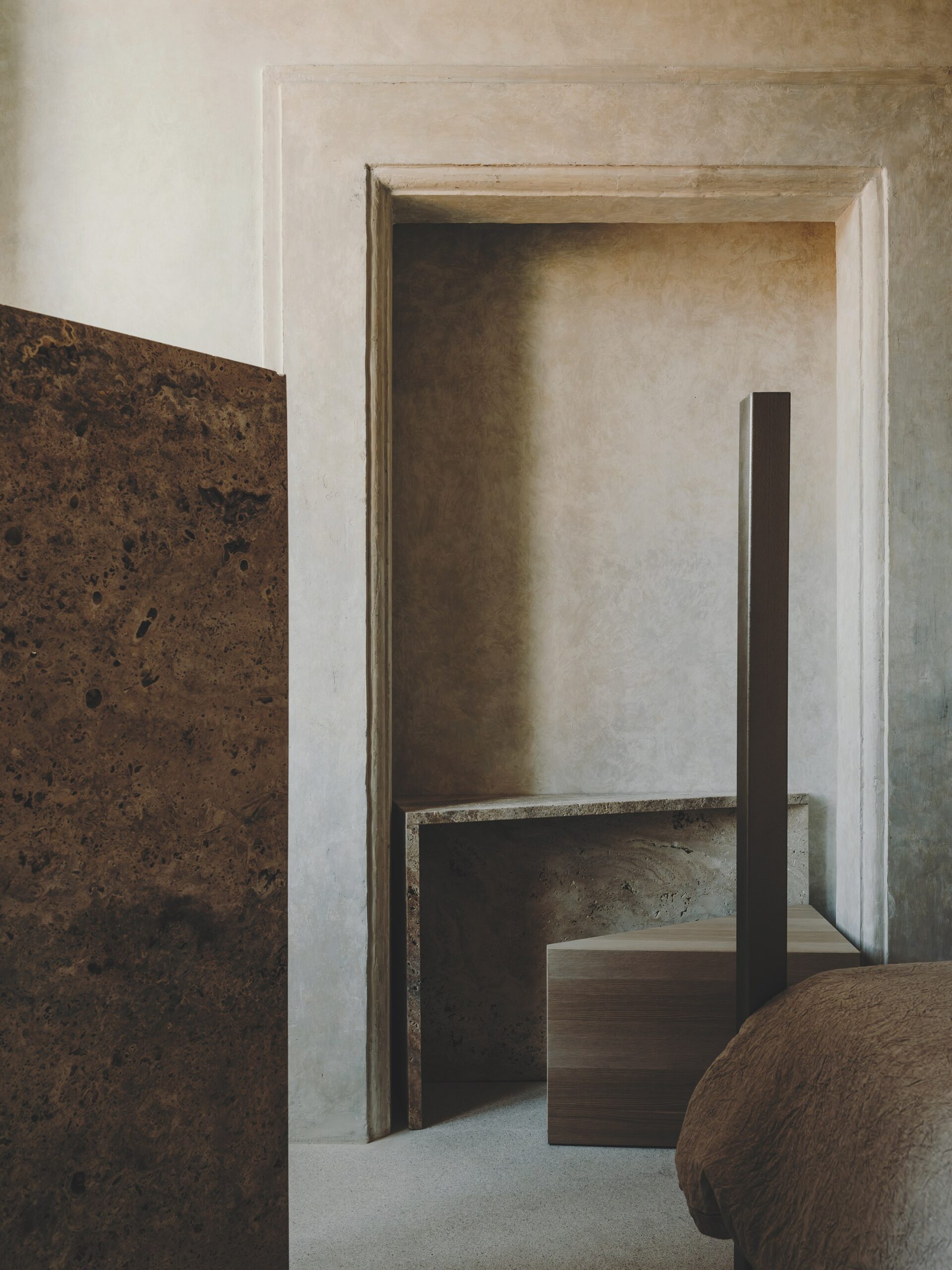
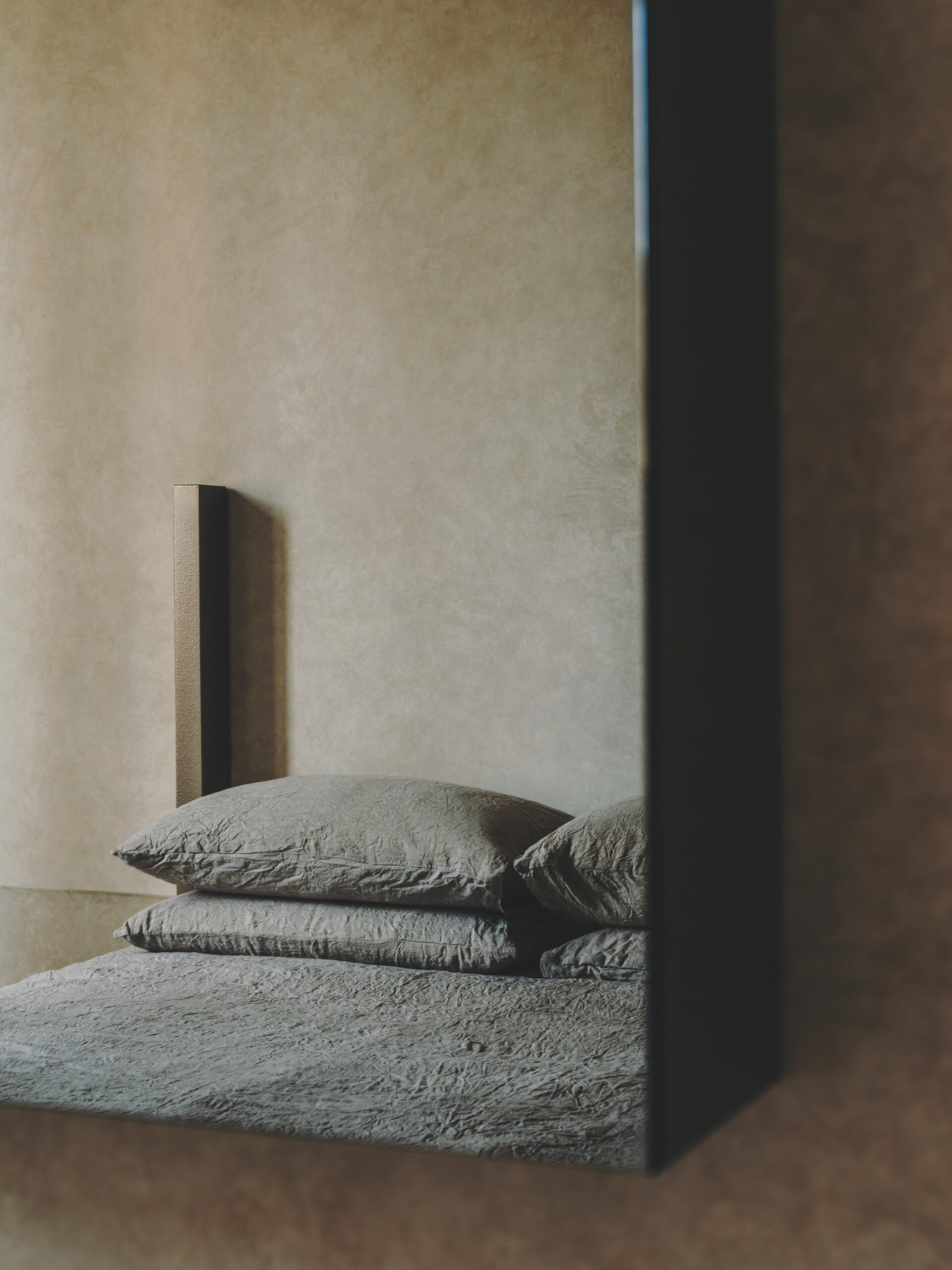
Above, five floors of rooms. The 30 rooms, which Timi himself describes as “Raw Rooms,” feature an evolved monastic aesthetic, where iconic pieces from his collection have been revisited and recalibrated specifically for this five-star hotel’s spaces. The extreme use of raw materials extends beyond architectural finishes to small-scale objects, up to desks conceived as lecterns with integrated seating. The sculptural volumes, now a signature of the artist-craftsman’s language, in their ultimate expression as totems, conceal from view all the practical yet visually intrusive elements of hospitality.
The rigor of simplicity and the ability to handcraft natural materials tell a story of non-opulent luxury, one defined by savoir-faire, where artisanal mastery enhances intimate spaces, transforming them into spatial works of art. It is an expression of Italianness, Roman craftsmanship handed down through centuries, and the rigor of conscious material use that teaches the beauty of purity without over-design.

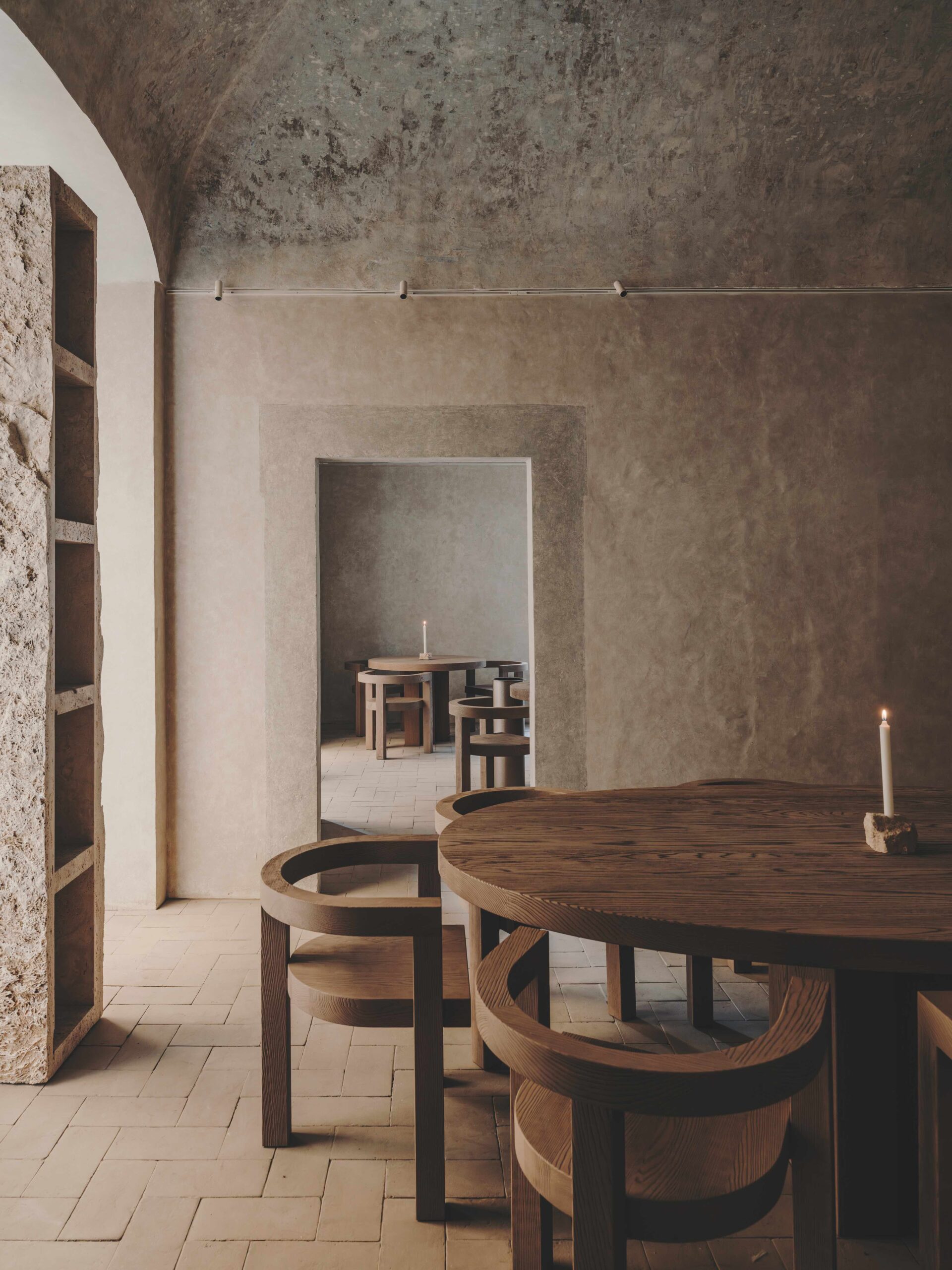
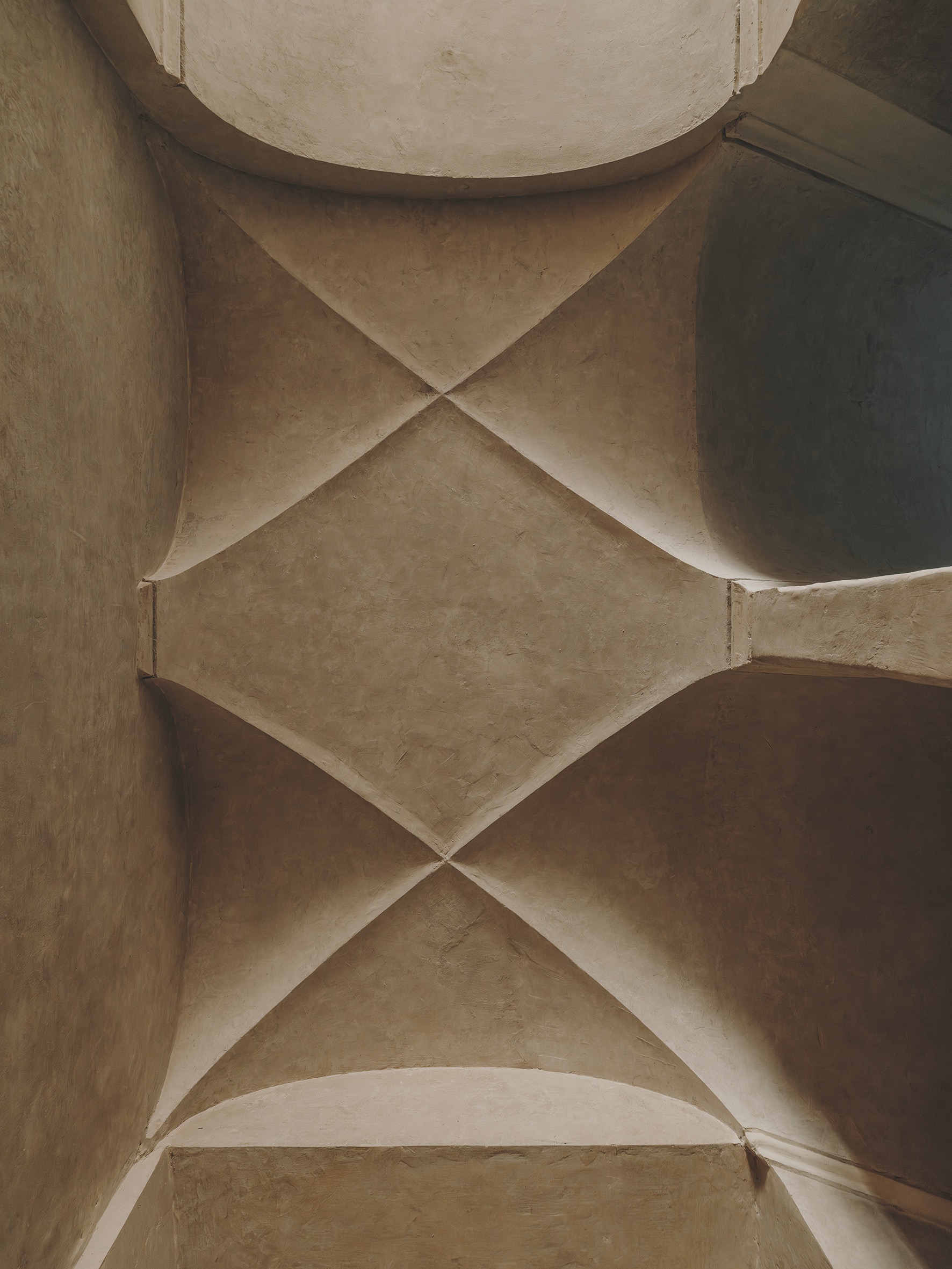
When asked, “What does hospitality mean to you?”, Henry Timi explains that hosting is about sharing, but also offering an experience to one’s guests, giving them a memory to cherish.
“When you step into Nomos Hotel, you enter a unique simplicity. You come into contact with a materiality that has been lost today due to artificiality, to excessive decoration that eliminates the individual—the guest—as a human being. My material minimalism highlights both the place and the person who inhabits it. In doing so, the soul finds its space, perceiving the genius loci and the authenticity of the place that welcomes me.”



